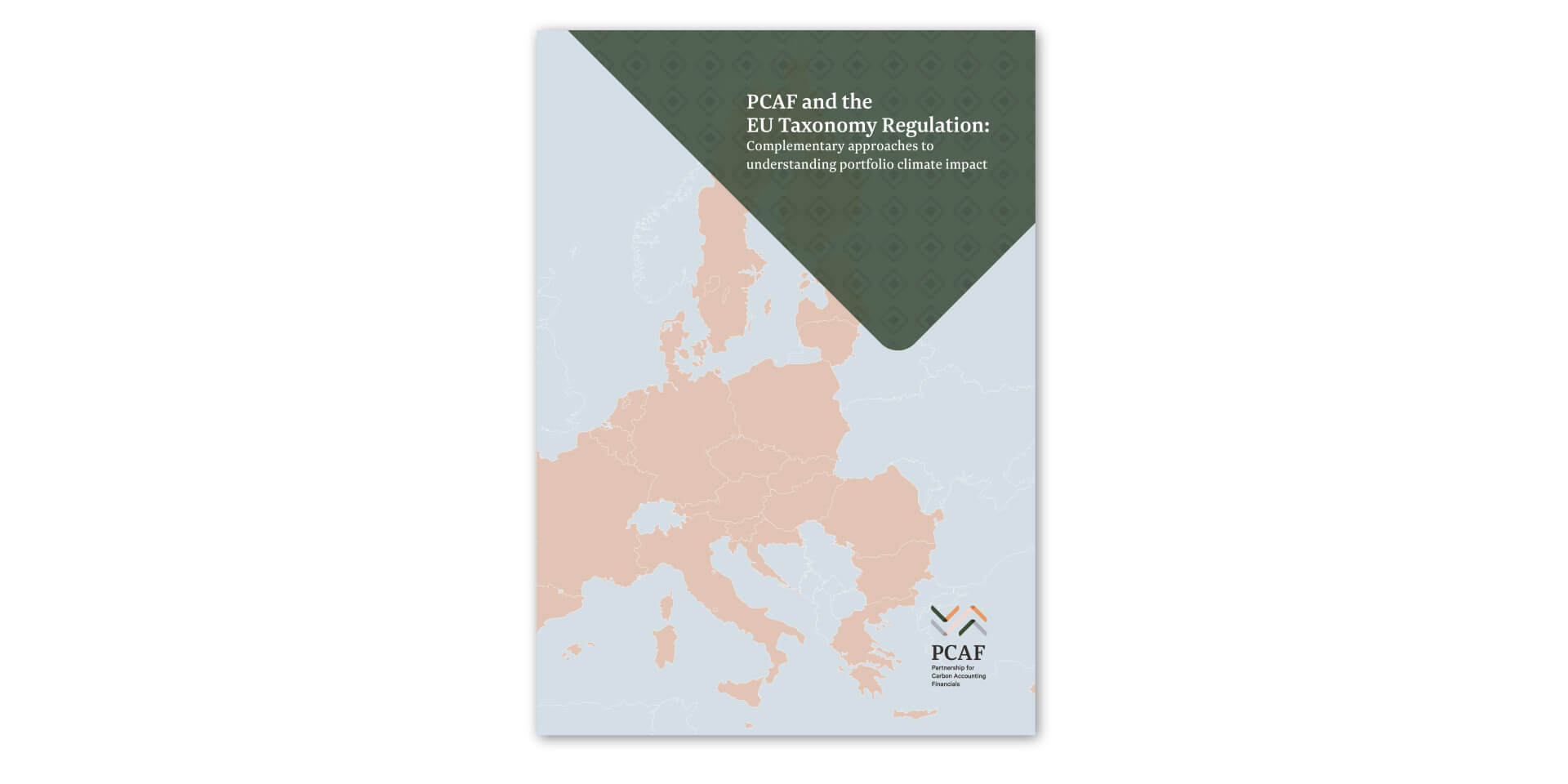
March 19, 2021 – The Partnership for Carbon Accounting Financials today published a policy report highlighting how financial institutions can use the Global GHG Accounting and Reporting Standard for the Financial Industry in parallel with the EU Taxonomy Regulation to understand their portfolio climate impact. The report continues PCAF’s track record of creating synergies with parallel forces in climate finance, this time from a policy angle.
PCAF and the EU Taxonomy Regulation: Complementary approaches to understanding portfolio climate impact provides readers with a side-by-side comparison of the Standard and the EU Taxonomy Regulation on topics such as metrics, influence in investment decisions, risk management and reporting. Important to note is that financial institutions do not require added resources to implement both the PCAF Standard and the EU Taxonomy Regulation in parallel. This is because firms subject to the Non-Financial Reporting Directive—and therefore, the EU Taxonomy Regulation—already must report their absolute emissions.
Crucially, the report examines the ways in which the PCAF Standard’s robust and transparent GHG accounting methodologies can support financial institutions that fund companies in transition.
The key takeaway: used in concert, the Standard and the EU Taxonomy Regulation are powerful tools which complement each other’s strengths and enable financial institutions to holistically understand their portfolio climate impact. This understanding of both the negative as well as the positive climate impacts of their portfolios equips financial institutions to take strategic action in their climate journey towards alignment with the Paris Agreement.